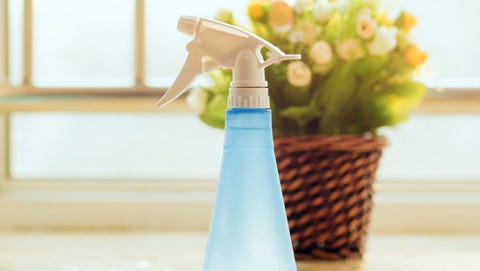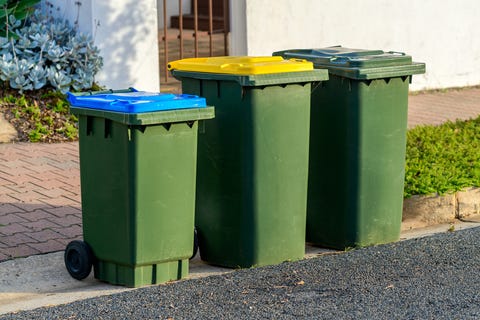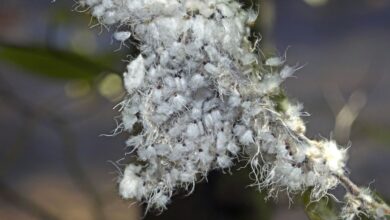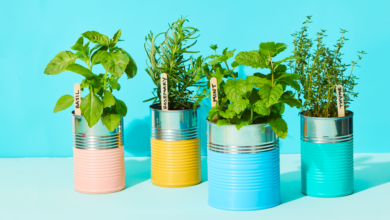6 Ways to Keep Wasps Away From Your Home
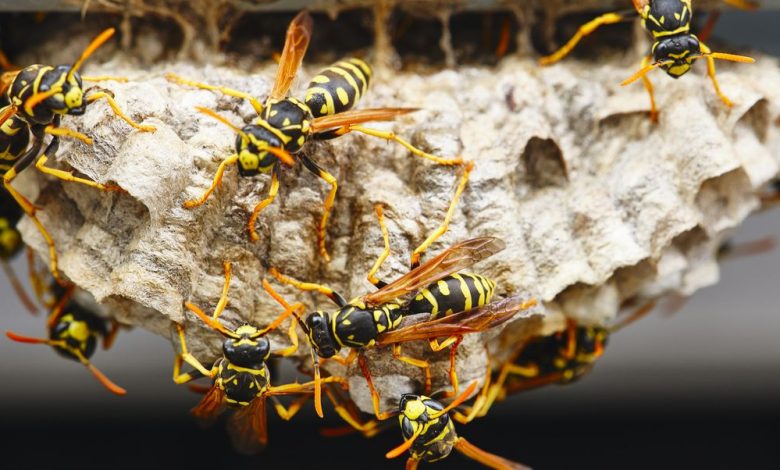
[ad_1]
Nothing can put a damper on an otherwise sunny day around the pool quite like wasps can. According to Dr. Jim Fredricks, Ph.D., chief entomologist for the National Pest Management Association (NPMA), there are around 4,000 different types of wasps in the United States, which include common species like mud daubers, yellow-jackets and paper wasps.
Wasps and other stinging pests are a common summertime nuisance, usually active during the day before returning to their nests at dusk. In the second half of summer and early fall these pests are at their most active, when they’re actively searching for food and when their colonies are the largest.
While some wasp species like yellow jackets and paper wasps are usually aggressive when humans approach their nests, they’re actually great to have around the garden. While bees feed their larvae pollen, wasp species nourish theirs with other insects. That means that wasps are great for controlling pests that would otherwise be snacking on your flowers and tomatoes. According to National Geographic, some farmers even use them to protect crops. And contrary to popular belief, wasps do pollinate plants, just not to the same extent that bees do.
Despite all the ways wasps can benefit your yard, they can still sting and cause an allergic reaction. “Stinging insects send more than half a million people to the emergency room every year,” says Dr. Fredericks. If you already have a large infestation, Dr. Fredricks strongly suggests not dealing with them on your own. Instead, call a licensed pest control professional for nest removal. Luckily, there are things you can do to keep wasps from building a nest in the first place. Give one of these six methods a try:
Clove-Geranium-Lemongrass Oil Blend
Research published in the Journal of Pest Management Science found that a combination of clove, geranium and lemongrass essential oils successfully repelled wasps. Mix several drops of each oil with water and dish soap in a spray bottle and coat areas on the outside of your home where wasps like to build nests: under eaves, porch roofs and other ledges and crevices. According to Dr. Fredricks, different species build nests in different locations. While mud daubers and paper wasps build hanging nests, yellowjackets tend to make their nests underground or inside void spaces like hollow trees.
Since fully covering all of those areas with essential oils would be impractical, target spots where you’ve found old nests in the past, as paper wasps tend to build new nests in the same locations, according to Clemson University Cooperative Extension Service.
Soap and Water
According to Chris Walker, an eco-friendly wasp removal expert in Southeastern Pennsylvania, you can tackle small hanging nests with a mixture of two tablespoons of dish soap in a spray bottle filled with water. “The soap clogs their breathing pores (called spiracles) and they die almost instantly,” Walker says.
Peppermint Oil
Peppermint oil may also be effective at repelling wasps, according to the same study from the Journal of Pest Management Science. You can try applying it as described above, or you can purchase EcoSmart Organic Wasp and Hornet Killer, which is mint-oil-based, to target established nests.
Wasp Traps
Wasp traps work by luring the insects inside a container with some tempting treat like sugar water and then preventing their escape. You can make one yourself in about five minutes by sawing the top off a two-liter bottle and inverting it inside the bottom, or cutting a small hole in the top.
If the DIY route isn’t for you, you can also purchase a more heavy-duty trap online such as this highly-rated one sold on Amazon. However, Walker notes that traps probably won’t fully solve your problem because you might end up capturing wasps passing through your yard, rather than just ones building a problem nest. If using a trap, your best bet is to try to locate the nest and place the trap close to its entrance.
Patch Up Cracks
If you want to keep wasps from invading your house, preventative measures are key, says Walker. He recommends sealing up tiny cracks — like those around the edges of siding and where power lines enter the house —and patching up holes in window screens. The best time to do this is in late fall after most worker wasps have died off or in early spring before nests become active. “Use a combination of caulk or expandable foam sealant, like Great Stuff, to plug cracks and holes,” says Dan DiClerico, Director of the Home Improvement & Outdoor Lab at the Good Housekeeping Institute. “Besides keeping out wasps and other pests, this will make your home more energy efficient.”
However, if you do discover wasps inside your house, don’t try to seal the nest inside the wall, thinking they’ll just die off. “They’ll find their way out through vents or even chew through drywall,” says Walker.
Keep Food and Trash Covered
According to the University of New Hampshire Cooperative Extension, wasp problems are usually worse in yards that have lots of food sources in the form of exposed garbage, recycling bins and composting food matter. Make sure to tightly seal the lids to your garbage bins. “Bins with a secure locking lid are ideal, but a pair of bungee cords should also do the trick,” says DiClerico. You might also consider composting indoors if you find your compost pile is causing problems.
“As invaders of backyard barbecues, stinging insects are attracted to sweets and proteins, and thus people,” says Dr. Fredericks. He suggests “pour[ing] canned drinks into cups when enjoying a cold beverage outdoors. Wasps are known to climb into cans and sting when an unsuspecting person takes a sip.” Generally, keep sugary beverages and all food out of reach whenever possible.
This content is created and maintained by a third party, and imported onto this page to help users provide their email addresses. You may be able to find more information about this and similar content at piano.io
[ad_2]
Source link


